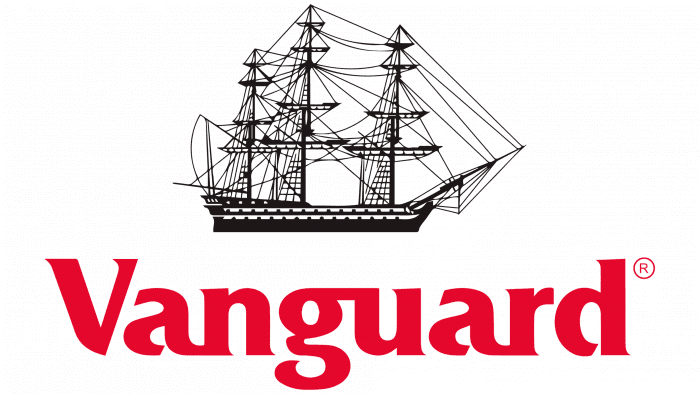The Vanguard logo invites you to sail the turbulent financial sea. Making money is an adventure that involves risk. The skill of a trained team is of great importance. Partnering with Vanguard is a 100% win, says the logo.
Vanguard: Brand overview
Meaning and History
This is the original structure, formed as a protest gesture by John C. Bogle, who was fired from his former job for a failed merger he oversaw. With impressive experience (previously, the financier served as chairman of the investment fund of the management company Wellington Management Company LLP), he created a unique organization.
Its originality lies in that it belongs to the funds it includes and, therefore, is clients’ property. The corporation currently has 370 funds: 180 American and 190 foreign. The total number of investors has exceeded 20 million. This position has allowed Vanguard to become one of America’s major Big Three index funds.
What is Vanguard?
It is a private equity firm founded in 1975 by American business tycoon John C. Bogle. She is engaged in mutual investment and exchange-traded funds, provides brokerage and trust services, specializes in financial planning and asset management. It has one main office (in the city of Malvern) and several subsidiary offices in the United States and overseas offices.
The company’s career began with its founder’s failure, who had previously served in the Wellington Management Company, where he was admitted immediately after graduating from Princeton University. After a failed merger, he was fired. However, the young man did not give up and created his organization. As John C. Bogle pointed out, if he hadn’t failed, he would not have been fired; if he had not been fired, there would have been no Vanguard. It is such a confident and stable company that it has never changed its logo, which was received at the start of its career.
The emblem reflects the conceptual position of the financial structure and is associated with the name. It was received in honor of the flagship HMS Vanguard, Admiral Horatio Nelson. The founder settled on this option after a dealer in antique engravings gave him a book on the naval prowess of Great Britain, in which this ship appeared.
At first, everyone opposed this choice of name for an investment organization. But they agreed after a weighty argument. Bogle said that Vanguard funds would be alphabetically next to Wellington funds. Then, a brilliant career began with several successful projects, associations, and expansions at home and abroad. The company’s founder resigned from the management post of his own free will upon retirement. He ceded his position to John J. (“Jack”) Brennan in 1999.
Vanguard: Interesting Facts
Vanguard Group, founded by John C. Bogle in 1975, is a giant in the investment world, known for its focus on mutual funds and putting investors first. It’s one of the biggest investment companies globally.
- First Index Fund: In 1976, Vanguard launched the first mutual fund for individual investors, the Vanguard 500 Index Fund. It aimed to offer low-cost, broad market exposure, based on Bogle’s idea that a diversified portfolio matching the market’s performance is better in the long run than most actively managed funds.
- Unique Ownership: Vanguard is owned by its funds and, therefore, by its investors. This structure helps keep fees low because Vanguard operates at cost.
- Low Fees: Known for its low expense ratios, Vanguard has saved investors billions in fees, emphasizing that low costs are key to investing success.
- Huge Asset Management: Vanguard manages trillions of global assets, and its size reflects investors’ trust in its approach to low-cost, long-term investing.
- Broad Investment Options: Vanguard offers more than just index funds; its products include actively managed funds, ETFs, bonds, and more, meeting various investment needs.
- ETF Innovator: Vanguard has been instrumental in making ETFs popular. They are known for their low costs and tax efficiency and provide another option for diversified investing.
- Worldwide Operations: Based in Malvern, Pennsylvania, Vanguard has a global reach with offices in Europe, Asia, and Australia, serving a diverse client base.
- Investor Education: Committed to helping investors make informed decisions, Vanguard offers extensive resources on investing, financial planning, and retirement.
- Shareholder Advocacy: Vanguard actively promotes shareholders’ rights, encouraging corporate practices that benefit investors in the long run, such as fair executive pay and environmental responsibility.
- Personalized Advice: Expanding its offerings, Vanguard now provides personal financial advice through Vanguard Personal Advisor Services, blending personalized advice with technology.
Vanguard’s focus on keeping costs low, educating investors, and offering a wide range of products has changed the investment landscape, making stock market growth accessible to many.
Font and Colors
The investment fund’s logo, named after the naval navigator Nelson’s legendary ship, features the ship of the same name. It has a visually simplified design without many details and characteristic elements. The three-masted structure stands out grandiosely against the background of personal signs of other financial institutions. It inspires confidence and decisiveness and testifies to the enterprise’s unsinkability and ability to stay afloat despite difficulties. On the right is the name of the fund, written in large letters.
The developers chose the Fremont Bold typeface from FontSite Inc. To give it a touch of originality, they slightly reworked it, adding an upper join between “g” and “u,” a lower one between “a” and “r,” “a” and “n.” The rest of the characters are the same as the base font: light, sharp, almost invisible serifs, and letter breaks at the bottom. All characters are lowercase, except for “V” (it is uppercase).
The logo’s color scheme is monochrome so that nothing distracts attention from focusing on the main thing—finances. The palette includes black (ship) and marsala (text).
FAQ
Why is Vanguard so famous?
The brand is well known for many reasons, making it a leading name in the investment world.
Vanguard was founded by John C. Bogle in 1975. Its mission is to support all investors, treat them fairly, and help them achieve investment success. This mission has been central to the brand’s activities and has attracted many investors.
One of the main reasons the brand is famous is its focus on low-cost investing. Offering low-cost mutual funds and ETFs has made investing more accessible and attractive.
John Bogle created the first index mutual fund designed to match the performance of the S&P 500. This major innovation showed passive management could be an effective strategy. Vanguard’s leadership in offering these funds has enhanced its reputation.
The brand values transparency and stability. It has a unique cross-ownership structure in which investors in its funds own the company. This aligns the company’s interests with its investors, building trust and stability.
Vanguard offers a variety of investment options, including passive and actively managed funds, allowing investors to spread their risk.
Is Vanguard in the US?
Yes, the company is based in the United States and is headquartered near Valley Forge, Pennsylvania. This location is central to its activities and is the main focus of its operations. The brand is one of the world’s largest investment management companies, demonstrating its significant influence in the financial industry.
Vanguard has a strong global presence. It operates in North America, Europe, Australia, and Asia. This broad reach allows it to serve a wide range of investors worldwide. The company is dedicated to its employees, whom it calls its “crew.” Vanguard is committed to creating a supportive and inclusive work environment, helping its employees feel valued and connected wherever they are.
What does the Vanguard logo mean?
The logo’s meaningful design reflects the company’s history. It depicts a sailboat paying tribute to naval explorer Admiral Horatio Nelson. The ship symbolizes leadership, exploration, and a pioneering spirit central to the brand.
The ship in the logo indicates that the company is a leader in the investment industry. The historic vessel symbolizes the brand’s role in helping investors navigate financial markets.
The logo includes the company name in a bold and clear font, emphasizing its visibility and reliability. The combination of the ship and the name underscores the brand’s mission to lead the investment world.
What is the symbol for Vanguard?
The symbol is a three-masted sailing ship named after the ship of British Admiral Nelson. The ship is depicted in monochrome, standing out next to the red brand name. It is drawn with narrow black lines, giving it a detailed and airy look. Although the ship appears fragile, it is a strong combat vessel. The combination of the ship and the red name creates a memorable symbol that reflects the essence of the brand’s mission and values.
What is the font of the Vanguard logo?
The logo uses the Fremont Bold font, which was modified to create a unique brand image. This font has distinctive features that make it stand out. The letters have slots at the bottom, giving the text a crisp and clean look. Some letters are connected in pairs, creating a unified appearance. The font has unfinished or open lines that give it a modern look, making the text less rigid and more accessible. Each character in Fremont Bold is rounded, giving the font a balanced and smooth style. This roundness makes the text friendly and attractive while maintaining a professional image.






